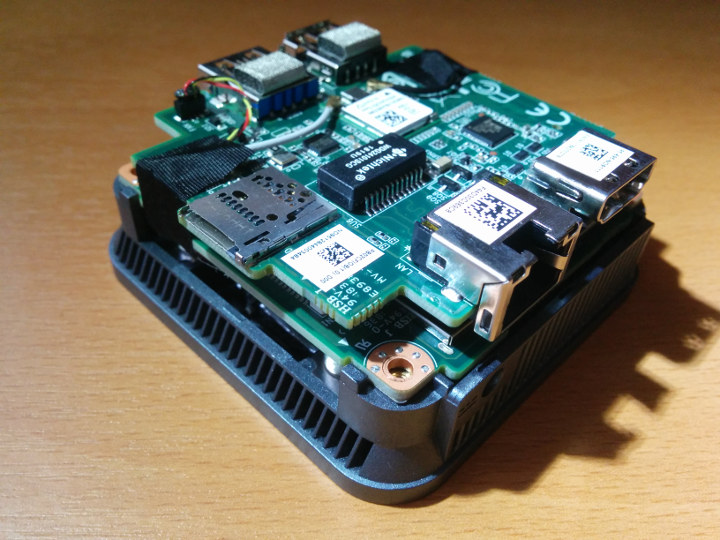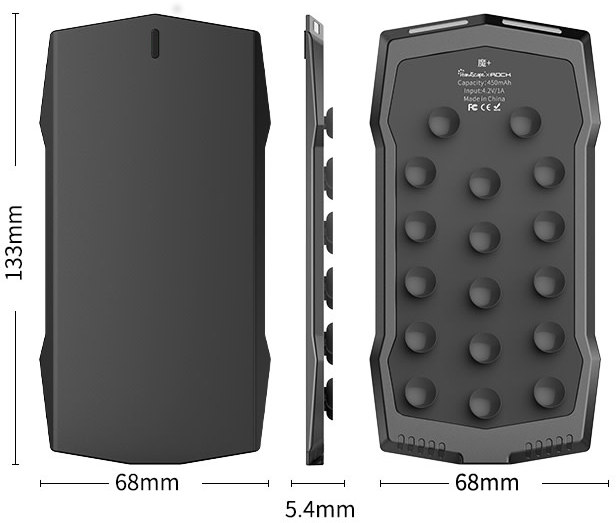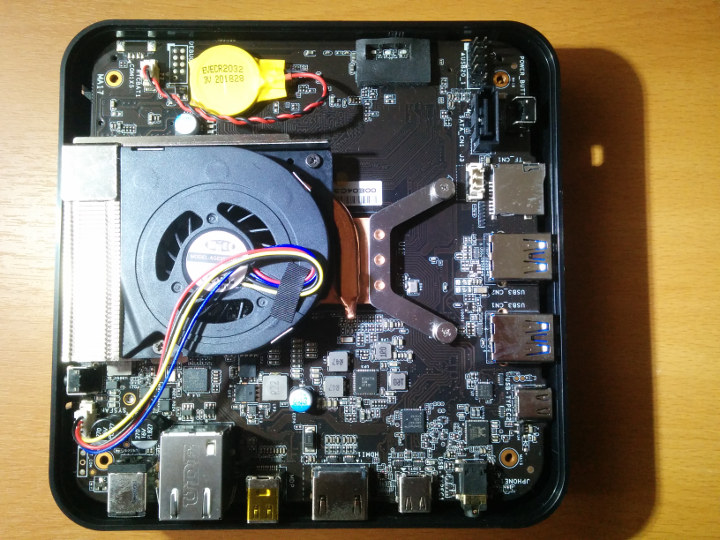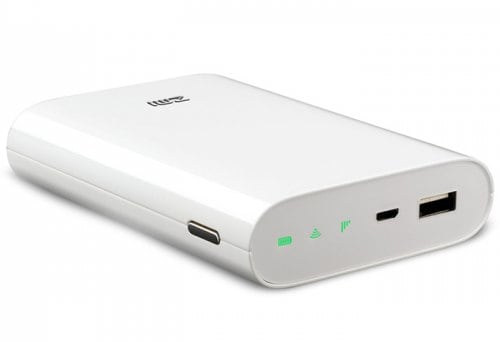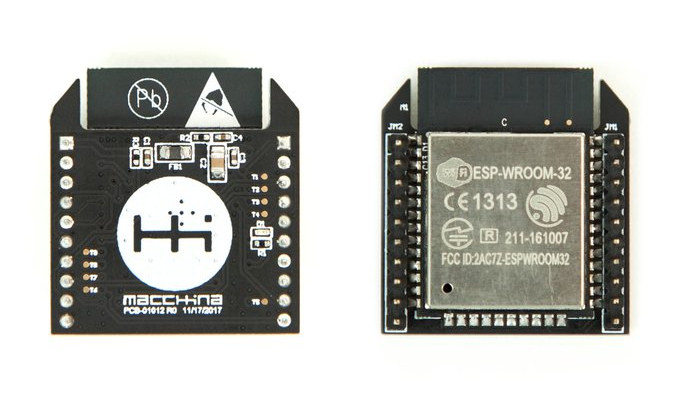ECS (Elitegroup Computer Systems) is a Taiwanese company that has been offering mini PCs for several years now. Last year they announced their ‘pocket-sized’ model the LIVA Q. Originally featuring Apollo Lake SoCs it has now been upgraded and renamed as the LIVA Q2 and offers a choice of Gemini Lake SoCs. The distinguishing feature of the LIVA Q series however is the form-factor. Compared with Intel Compute ‘stick’ PCs and Intel NUC ‘mini’ PCs the LIVA Q2 is a ‘micro’ PC. This micro PC is like a minimalist mini PC that includes just the minimum number of useful ports namely a couple of USB ports (3.1 and 2.0) on one side, a micro SD card slot on another and finally an HDMI (2.0) and gigabit Ethernet at the rear. The resultant micro PC is beautifully small consisting of a 70mm (2.76″) square case by 33.4mm (1.31”) tall which can […]
MUJA Touch Sensitive Gamepad Sticks to the back of Smartphones (Crowdfunding)
Gaming on smartphones has given rise to various accessories including smartphone gamepads, and smartphone docks to connect USB keyboard and mouse. MUJA is yet another Bluetooth gaming accessories that sticks to the back of your phone and offers four touch sensitive zones enabled 6 fingers operation once you include your two thumbs taking care of handling the control on the touch screen display of the phone itself. MUJA smart touchpad specifications: Connectivity – Bluetooth 4.2 up to 10 meters range Buttons – Four touch sensitive areas 17 suction cups to stick on back of smartphone (compatible with 4.7″ smartphone or larger) Battery – 450 mAh good for about 36 hours of playtime, 56 hours in standby Dimensions – 133 x 68 x 5.4mm Weight – 59 grams Certifications – PSE, telecom, FCC ,CE, RoHS You’ll just need to install MUJA app for Android or iOS on your smartphone with supports […]
Kodi 18 “Leia” Released Ahead of FOSDEM 2019
As one should have expected based on the abstract of the upcoming Kodi presentation at FOSDEM 2019, Kodi 18 “Leia” has just been released a few days before the 2-day open source developer event. It’s been nearly two years since the release of Kodi 17 “Krypton”, and it took a little longer than initially expected for Kodi 18 to become stable enough for an official since there have been so many changes including half a million lines of code added by 36 open source developers, close to 10,000 commits for almost 9,000 changed files. Some of the improvements in Kodi 18 include: Retroplayer gaming with support for gaming emulators, ROMs and game controls. Digital Rights Management (DRM) decryption support to play subscription content Improved Music Library with better filtering, faster API access, and more Live TV improvements including support for new back-ends like Zattoo, Teleboy, and Sledovanitv.cz, as well as enhanced […]
Pepper Jobs GLK-UC2X Mini PC Review with Windows 10 and Ubuntu 18.10
Pepper Jobs is a new company led by Ken Wong who was formerly MINIX’s product director and defined many innovative products such as NEO-X series Android media hubs and NEO-Z series Intel-based mini PCs. The first Pepper Jobs designed and released mini PC is the GLK-UC2X targeting small business, 4K home theater, and living room use with an emphasis on low power and great savings on electricity bills. The GLK-UC2X contains an Intel Celeron N4100 Processor Gemini Lake SOC which is a quad-core processor bursting up to 2.40 GHz together with the Intel UHD Graphics 600 processor that is capable of 4K support at 60Hz. It physically consists of an approximately 139mm (5.5″) square case about 33mm (1.3”) tall with a side panel that includes the power button, a couple of USB ports, a Type C USB port and a micro SD card slot with the rest of the ports […]
Smartphones in 2019 – Foldable Displays, Button-Free & Port-Free Experiences
In recent years, I’ve found smartphones releases mostly underwhelming with some incremental improvement in performance, better cameras, the removal of the 3.5mm headphone jack, and in some case a notch appeared in the design for the camera, but nothing that radically changes the market. 2019 may be a different year, as smartphones with foldable displays will be launched, and some companies will introduce smartphone without any buttons, nor ports. Foldable Phones So far at least four companies have announced plans for foldable phones as Google is implementing foldables support in Android. We’ve already covered Samsung Infinity screen in the previous link, but there have been reports a new $1,5000 Motorala Razr phone is coming up with a foldable display, and a Royole FlexPai prototype was demonstrated at CES 2019 with a 7.8″ AMOLED display that folds in half and a Qualcomm Snapdragon 855 processor. The latter is actually the first […]
$54 ZMI MF855 is Both a Power Bank and a Portable 4G Wireless Router
Tiny routers usually come with at least one USB port that allows you to connect a 3G or 4G cellular dongle, and since it’s often used on the go, or as a backup solution it makes sense to have a battery in the router as well, as was the case for Marstek MPR-N9 I covered way back in 2013. Xiaomi ZMI MF855 portable wireless router offers the same function but with an integrated 4G modem, a larger 7,800 mAh battery that can also be used to charge your other device. The router looks like a standard power bank from the outside. ZMI MF855 router key features: Cellular Connectivity 4G/3G and 2G networks Micro SIM card socket FDD-LTE bands – B1 1800 B3 2100 B7 2600 MHz TDD-LTE bands – B38 1900 B39 2300 B40 2500 B41 2600MHz WCDMA bands – B1 850 B2 900 B5 1900 B8 2100 MHz WiFi […]
TAIHE Gemini is a 15.6″ Full HD or 4K Portable Display (Crowdfunding)
Portable displays have been available for a while, but they used to be fairly heavy, as for example, Gechic On-Lap Monitor 2501M 15.6″ portable monitor weighted 1.3 kg with cover. However in recent times, we’ve seen several such products – LAPSCREEN and DUO Add-on Display – launched with lighter designs, and the advance as USB type-C and power delivery make those even more attractive since a single cable can be used to transfer video, and power both the display and the host device. TAIHE Gemini is yet another option, but at 15.6″ is larger than the two aforementioned products, it is equipped with its own battery and kickstand, and comes in two variants with either 1920×1080 Full HD or 3840×2160 (4K UHD) resolution. TAIHE Gemini FHD & UHD portable displays specifications: Display Gemini FHD – 15.6″ 10-point touchscreen IPS display with 1920×1080 resolution, 15ms response time, 180° kickstand Gemini UHD […]
SuperB XBee Compatible Module Features ESP32 WiFi & Bluetooth SoC (Crowdfunding)
Digi XBee is an ecosystem of standardized wireless module found in various development boards, and Espressif Systems ESP32 is by far the most popular WiFi and Bluetooth solution in the maker market. Somebody designed ESP32Bee combining ESP32 with XBee form factor a couple of years ago, but it was never commercialized, and I’m not aware of alternatives, except for SuperB module based on ESP32-WROOM-32 module that has just launched on Crowd Supply. SuperB modules specifications: Wireless Module – ESP32-WROOM-32 with ESP32 dual core WiSoC clocked at up to 240 MHz 4MB flash (potentially upgraded to 16MB) Connectivity – 802.11 b/g/n WiFi, and Bluetooth Classic + LE Expansion – 3.3 V levels, UART, SPI and GPIOs broken out to headers Misc – 1x user LED Power Consumption – Sleep current is less than 5 μA Dimensions – XBee form-factor compatible Certifications – Fully certified with integrated antenna and software stacks The […]


